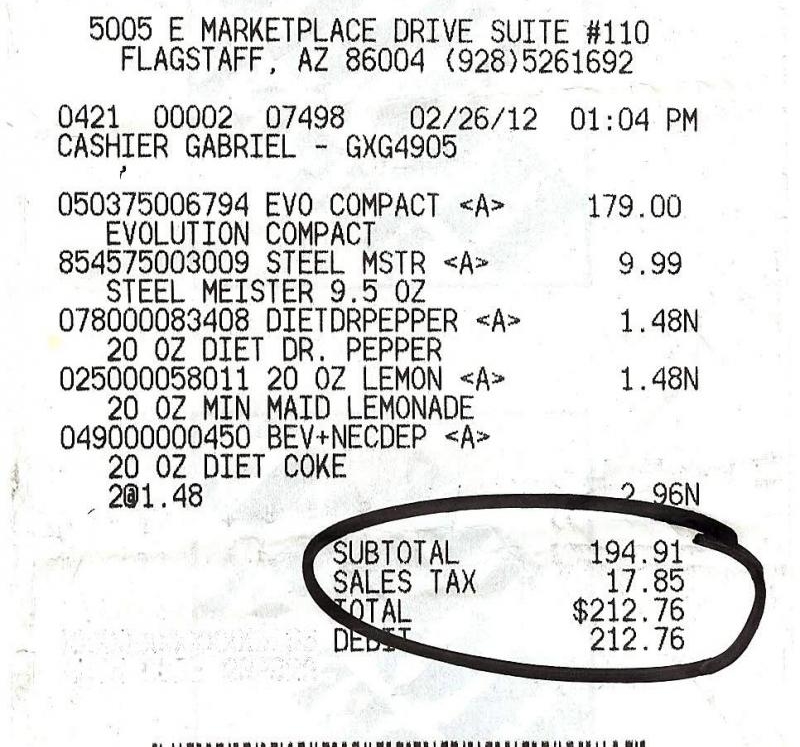
This lesson accompanies the BrainPOP topic Taxes, and supports the standard of explaining the ways in which the government pays for the goods and services it provides. Students demonstrate understanding through a variety of projects.
Step 1: ACTIVATE PRIOR KNOWLEDGE
Display an image of a receipt that includes sales tax, like the one shown below:

Step 2: BUILD BACKGROUND
Step 3: APPLY and ASSESS
Assign Taxes Challenge and Quiz , prompting students to apply essential literacy skills while demonstrating what they learned about this topic.
Step 4: DEEPEN and EXTEND
Students express what they learned about taxes while practicing essential literacy skills with one or more of the following activities. Differentiate by assigning ones that meet individual student needs.
More to Explore
Economics Unit : Continue to build understanding around economic concepts with more BrainPOP topics.
Teacher Support Resources:
Analyze in detail how a key individual, event, or idea is introduced, illustrated, and elaborated in a text (e.g., through examples or anecdotes).
CCSS.ELA-Literacy.RI.6.4Determine the meaning of words and phrases as they are used in a text, including figurative, connotative, and technical meanings.
CCSS.ELA-Literacy.RI.6.7Integrate information presented in different media or formats (e.g., visually, quantitatively) as well as in words to develop a coherent understanding of a topic or issue.
CCSS.ELA-Literacy.RI.7.3Analyze the interactions between individuals, events, and ideas in a text (e.g., how ideas influence individuals or events, or how individuals influence ideas or events).
CCSS.ELA-Literacy.RI.7.4Determine the meaning of words and phrases as they are used in a text, including figurative, connotative, and technical meanings; analyze the impact of a specific word choice on meaning and tone.
CCSS.ELA-Literacy.RI.8.3Analyze how a text makes connections among and distinctions between individuals, ideas, or events (e.g., through comparisons, analogies, or categories).
CCSS.ELA-Literacy.RI.8.4Determine the meaning of words and phrases as they are used in a text, including figurative, connotative, and technical meanings; analyze the impact of specific word choices on meaning and tone, including analogies or allusions to other texts.
Grade: 09, 10 CCSS.ELA-Literacy.RI.9-10.4Determine the meaning of words and phrases as they are used in a text, including figurative, connotative, and technical meanings; analyze the cumulative impact of specific word choices on meaning and tone (e.g., how the language of a court opinion differs from that of a newspaper).
Grade: 11-12 CCSS.ELA-Literacy.SL.11-12.5Make strategic use of digital media (e.g., textual, graphical, audio, visual, and interactive elements) in presentations to enhance understanding of findings, reasoning, and evidence and to add interest.
CCSS.ELA-Literacy.SL.6.2Interpret information presented in diverse media and formats (e.g., visually, quantitatively, orally) and explain how it contributes to a topic, text, or issue under study.
CCSS.ELA-Literacy.SL.6.5Include multimedia components (e.g., graphics, images, music, sound) and visual displays in presentations to clarify information.
CCSS.ELA-Literacy.SL.7.2Analyze the main ideas and supporting details presented in diverse media and formats (e.g., visually, quantitatively, orally) and explain how the ideas clarify a topic, text, or issue under study.
CCSS.ELA-Literacy.SL.7.5Include multimedia components and visual displays in presentations to clarify claims and findings and emphasize salient points.
CCSS.ELA-Literacy.SL.8.5Integrate multimedia and visual displays into presentations to clarify information, strengthen claims and evidence, and add interest.
Grade: 09, 10 CCSS.ELA-Literacy.SL.9-10.5Make strategic use of digital media (e.g., textual, graphical, audio, visual, and interactive elements) in presentations to enhance understanding of findings, reasoning, and evidence and to add interest.
Grade: 11-12 CCSS.ELA-Literacy.W.11-12.2aIntroduce a topic; organize complex ideas, concepts, and information so that each new element builds on that which precedes it to create a unified whole; include formatting (e.g., headings), graphics (e.g., figures, tables), and multimedia when useful to aiding comprehension.
Grade: 11-12 CCSS.ELA-Literacy.W.11-12.6Use technology, including the Internet, to produce, publish, and update individual or shared writing products in response to ongoing feedback, including new arguments or information.
CCSS.Math.Content.7.RP.A.3Use proportional relationships to solve multistep ratio and percent problems. Examples: simple interest, tax, markups and markdowns, gratuities and commissions, fees, percent increase and decrease, percent error.